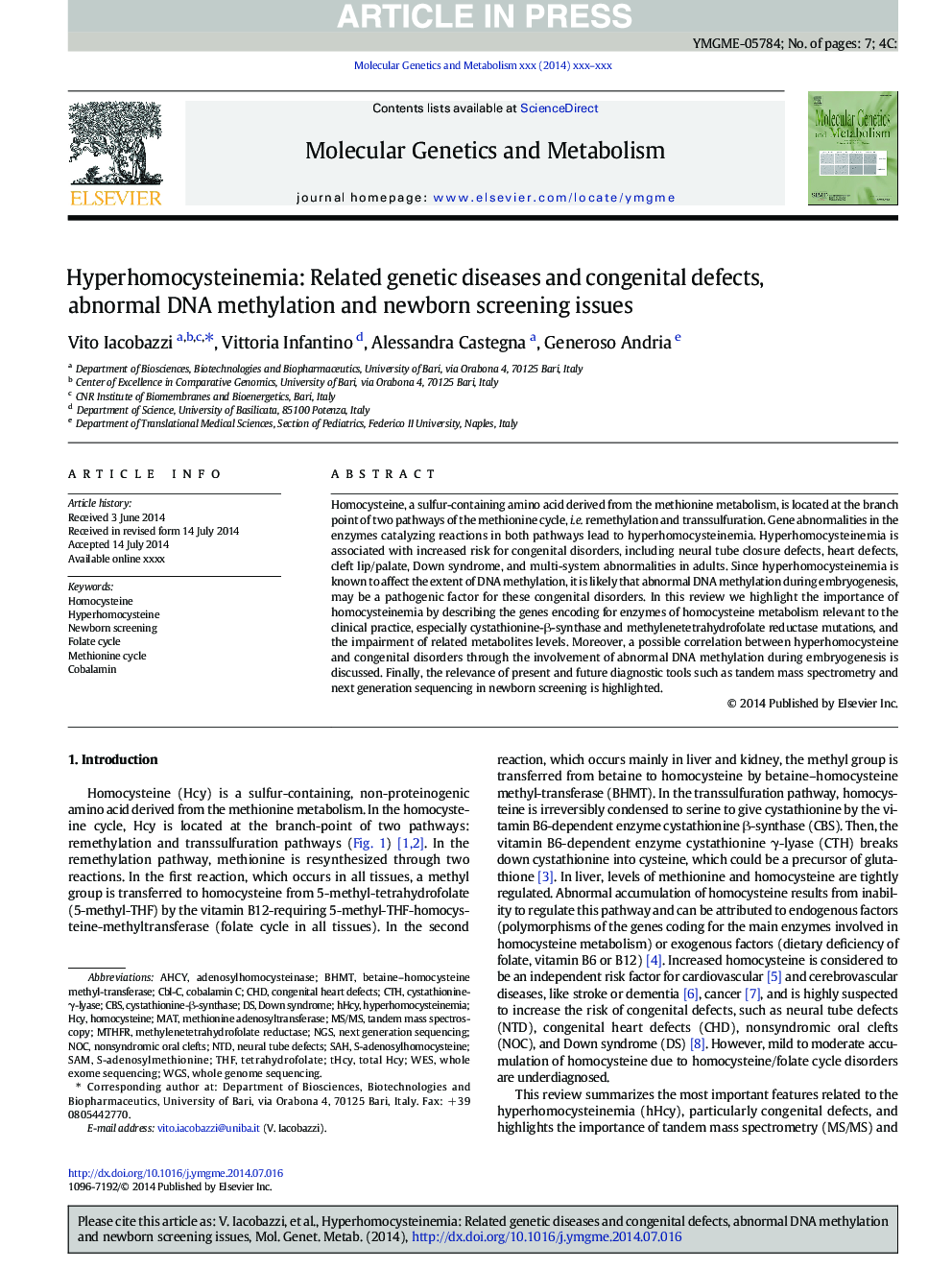| Article ID | Journal | Published Year | Pages | File Type |
|---|---|---|---|---|
| 8343825 | Molecular Genetics and Metabolism | 2014 | 7 Pages |
Abstract
Homocysteine, a sulfur-containing amino acid derived from the methionine metabolism, is located at the branch point of two pathways of the methionine cycle, i.e. remethylation and transsulfuration. Gene abnormalities in the enzymes catalyzing reactions in both pathways lead to hyperhomocysteinemia. Hyperhomocysteinemia is associated with increased risk for congenital disorders, including neural tube closure defects, heart defects, cleft lip/palate, Down syndrome, and multi-system abnormalities in adults. Since hyperhomocysteinemia is known to affect the extent of DNA methylation, it is likely that abnormal DNA methylation during embryogenesis, may be a pathogenic factor for these congenital disorders. In this review we highlight the importance of homocysteinemia by describing the genes encoding for enzymes of homocysteine metabolism relevant to the clinical practice, especially cystathionine-β-synthase and methylenetetrahydrofolate reductase mutations, and the impairment of related metabolites levels. Moreover, a possible correlation between hyperhomocysteine and congenital disorders through the involvement of abnormal DNA methylation during embryogenesis is discussed. Finally, the relevance of present and future diagnostic tools such as tandem mass spectrometry and next generation sequencing in newborn screening is highlighted.
Keywords
THFMethionine cycleFolate cycleHHcyAHCYS-adenosylhomocysteinecobalamin CMTHFRWESNTDCHDBHMTSAHCThCBSNGSWGSHcySAMcystathionine-γ-lyaseMS/MSS-adenosylmethioninetetrahydrofolateNext generation sequencingWhole exome sequencingWhole genome sequencingtHcyDown syndromecystathionine-β-synthaseNOCTandem mass spectroscopyNewborn screeningMatMethylenetetrahydrofolate reductasemethionine adenosyltransferaseNeural tube defectsCongenital heart defectshomocysteineHyperhomocysteinemiacobalamin
Related Topics
Life Sciences
Biochemistry, Genetics and Molecular Biology
Biochemistry
Authors
Vito Iacobazzi, Vittoria Infantino, Alessandra Castegna, Generoso Andria,
